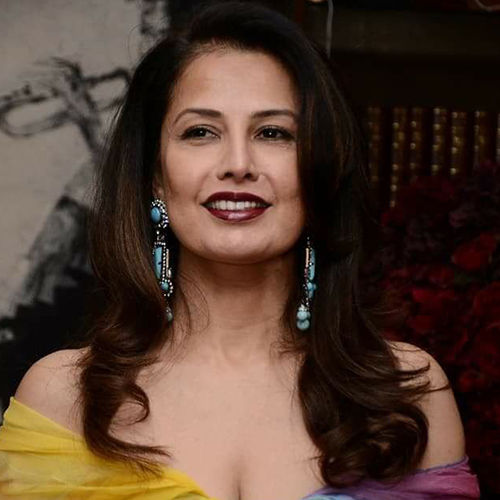Ritu Beri
Fashion Designer
Ritu Beri
"The young Indian woman has evolved considerably and so has her fashion quotient".
"The young Indian woman has evolved considerably and so has her fashion quotient".
Fibre2Fashion: How would you define fashion?
Ritu Beri:
Aesthetics aside, fashion sets the trend. Fashion is what helps the brain break barriers. Fashion helps life to go beyond just the here and now. Fashion is fun!
F2F: What makes your eponymous brand different from other brands?
RB:
Firstly, the Ritu Beri brand is about emotional branding. Being a pioneer, I had no map to follow. I had several firsts to my credit. For me, it is about a womans sensuality, elegance and simplicity. My style, my workmanship and the quality of my work are exclusive and create an individual identity.
F2F: How do you assess the Indian fashion industry? What trends do you observe in Indian couture?
RB:
The fashion industry has undergone a metamorphosis since I joined in 1990. Initially, fashion was more to do with ritual dressing for weddings and festivals. Now, it is more about being well dressed and trendy all the time. Today, Indian designers showcase at various fashion capitals of the world. India is a source of inspiration. Indian designers are primarily couture designers but eventually, they try blending old world charm of traditional embroideries with modern and western silhouettes.
F2F: What is the most challenging aspect of the Indian fashion industry?
RB:
When it comes to an emerging market like India, companies and some of the industrys most influential people are watching closely, and expecting more. Those who produce traditional garments are singled out for their ornate craftsmanship. Essentially, international markets work on principles of commercial viability and wearability. This makes the traditional Indian look hard to push on shop floors. The type of clients that Indian designers are trying to reach at home and abroad are very distinct, and both are looking for markedly different things. For Indian designers, the possibilities are large. A domestic market with more than one billion potential clients, as well as an international market keen to see them combine traditional flare with western commercial viability.
F2F: Do you think Indians have become more experimental when it comes to bridalwear? What designs, fabrics and colours are the favorites this wedding season?
RB:
In the last decade or so, the young Indian woman has evolved considerably and so has her fashion quotient. Whatever the bride wears has to have the feel of sensuality and grandeur. Brides now have the confidence and attitude to carry off unusual outfit options and many a bride can be seen these days in backless gowns and dresses. Brides today have a range of exciting and interesting outfits. Indo-western designs make bridalwear more fun and more memorable. The favourites this season would be ornate ball gowns with delicate embroidery, cut work, layering, rouching and die work. Style for sophistication with long, flowing dresses with a Mughal feel,shaped bodices, layers of lace, cascading embellishments and ornate trims come together to create timeless pieces that will be the talk of the occasion with the versatility of modern cuts and styles that have that welcome ethnic twist.
F2F: What is your take on kids fashion in India? What points should be kept in mind when designing for kids?
RB:
Kids fashion trends are changing. With the emergence of kids wear as an independent buyer group and being influenced by mass media and peer pressure, todays kids are more informed and self-conscious. Childrens apparel collections should have variety. Moreover, kids outgrow their clothes fast. For me, it is so much fun to dress up kids, and kids are particular about what they wear. My journey as a mother made me realise the need for designer wear for children, something that is exclusive and yet easygoing!
F2F: Do you think contemporary fashion concentrates more on business than on creativity?
RB:
I see myself only as a creative person. An intelligent, creative person knows how to extend ones creativity into business. As a creative person in business, we follow unique ways of nurturing our ambition.
F2F: International brands like Gucci, Burberry, Emilio Pucci and Roberto Cavalli are using Indian weaves and fabrics. Do you think that Indian couture is becoming the favourite of international designers?
RB:
History shows us that designers worldwide have been inspired by India. From YSL to Gaultier, designers have done a lot of work inspired by our rich culture and heritage. India has been a constant source of inspiration. Indian textiles and embroidery reflect our past and cater to the requirements of modern times. Todays fashion is a blend of India and the west, a blend of old world charm, our traditional embroideries and a modern flavour in western silhouettes.
F2F: What advice would you like to give to budding fashion designers?
RB:
Young designers today must think big and be hugely experimental. There should be no limits and they must push the envelope. The biggest challenge for young designers is to reach the proposed client and to be known. They also need to look into, distribution and promotion. They should believe in what they do and follow their dreams. It is risky but great fun!


20230103183907.png)









_8.JPG)
